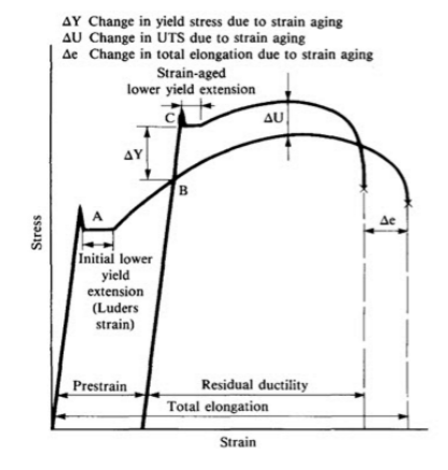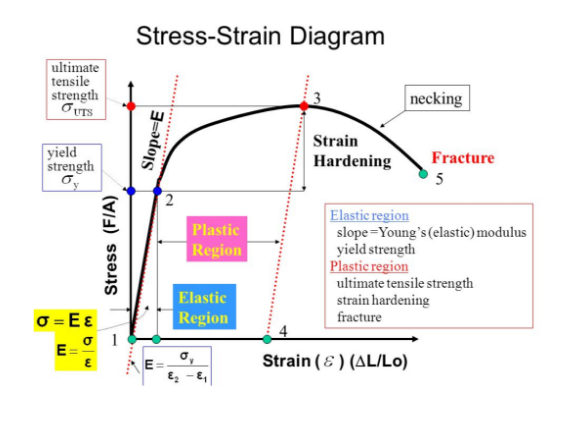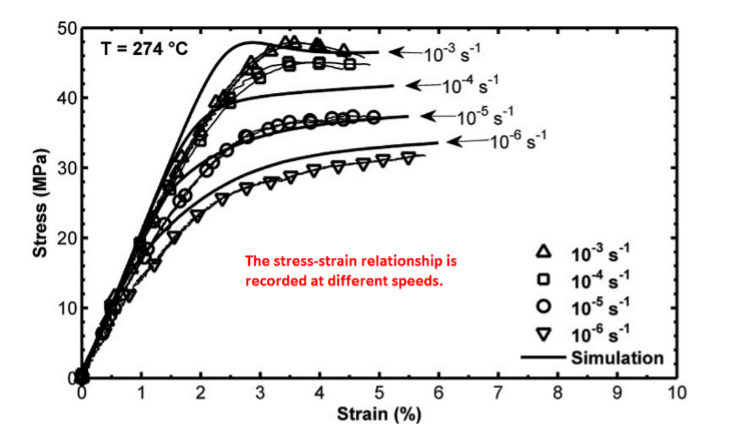Three Strains – Definitions and Uses in Simulation
Contents
Sheet metal forming is all about strains. Here are three common “strains” that get thrown around in discussions between those in the industry, and are worth discussing further:
1. Strain Aging
2. Strain Hardening
3. Strain Rate Sensitivity
Certainly, there are more aspects of “strain” that could be discussed, but we’ll focus on these three for now.
Strain Aging
From our glossary: The changes in ductility, hardness, yield point, and tensile strength that occur when a metal or alloy that has been cold worked is stored for some time.

Strain aging can occur in any type of material, be it steel, aluminum, copper, titanium, etc. And just like the freshness of a loaf of bread depends on how well it is stored, the same is true for sheet metal stock. Some materials/grades are more sensitive than others.
How do we measure the amount of strain aging? Certainly, the ideal situation is to NOT allow the material to be stored so long that significant strain aging will occur, but there is no textbook which accurately tables the change in mechanical properties over time, for every single grade of material. Therefore, the only reliable way to is to perform a uni-axial tensile strain test and compare the “un-aged” mechanical properties. These properties can then be used in simulation to compare the results of using an aged material vs “fresh” material.
Strain Hardening
From our glossary: An increase in hardness and strength caused by plastic deformation at temperatures below the recrystallization range. Also known as work hardening.

Strain hardening is a very important characteristic for sheet metal formers. Often referred to as “work hardening” this term is misleading. “Hardening” is not an accurate description of the resulting change in mechanical properties, after an increase in strains in a sheet metal material.
More correctly, the terminology should be “strain strengthening” or “work strengthening”, which more correctly describes the fact that the mechanical strength of the material has increased or strengthened beyond its original values. This phenomenon is used by sheet metal formers to draw and form sheet metal to deeper and more complex shapes than would otherwise be possible, compared to a material that does not “work strengthen”.
The “strain hardening exponent” (aka “n value”) is a key value used for input to simulation, to characterize how the nonlinear region of the stress-strain relationship is shaped during the forming process.
Strain Rate Sensitivity
The “rate of strain” can be considered as the speed of the press (or velocity curve) during the stamping process. How the material responds to the change in speed during forming, may be described as the material’s “strain rate sensitivity”. Also known as the “m value”.
Some materials respond favorably to increased strain rates (such as steel) meaning faster-forming results in “better” formability, but note that increased velocity in the press can also lead to higher friction and heating of the tool — making formability worse!
Other materials, such as aluminum, do not respond well to increased strain rates. It is true to say that aluminum forms “better” at slow speeds.
To correctly determine a material’s strain rate sensitivity, a uniaxial tensile test must be performed at varying speeds.

Strain rate sensitivity can be included in any simulation, by inputting the “m value” for any given material and specifying a press velocity curve. However, because of the complex interaction with lubrication (friction) it is not enough to simply input “m value” and the press velocity curve; a full understanding of the changes in friction as a result of changing pressures/speeds is also required, which is not easily obtainable by the average tool room resources.
Want To Learn More?
Take a look at some of our case studies to see how we’ve helped other manufacturers like you solve their strain aging or other tooling problems. We’re always happy to talk with you to discuss how we can assist in your metal working needs. Contact our team to learn more.
